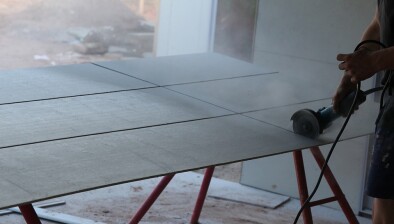MoD infrastructure project mismanagement has cost £1.3bn

Poor management of three Ministry of Defence (MoD) infrastructure projects has contributed to a combined cost increase of £1.35 billion and delays of between 1.7 and 6.3 years, the National Audit Office (NAO) has found.
The watchdog looked at three Defence Nuclear Estate projects together budgeted at £2.5bn
The three projects are:
- MENSA: a new nuclear warhead assembly and disassembly facility, valued at £1.8 bn, at the Atomic Weapons Establishment (AWE)-operated site in Burghfield (Reading).
- Core production capability (CPC) facilities: upgraded facilities, costing at least £474 million, at the Rolls Royce-operated site in Raynesway (Derby) to produce the latest nuclear reactor core designs.
- Primary build facility: new facilities at the BAE Systems-operated dockyard in Barrow-in-Furness (Cumbria), costing £240m to upgrade aging facilities and support improved submarine construction techniques.
After problems in the early stages of the projects, the NAO said that progress has been made, with some of the construction now complete. However, the MoD still needs to manage the remaining commercial risks and learn the lessons for future projects.
Along with the risks inherent in all major infrastructure projects, there are unique challenges with these projects. They include the need to comply with additional nuclear-related regulations, the limited pool of suppliers and the complexity of the designs. Problems in the earlier and riskier stages of these projects have caused delays and cost increases.
Some of the designs may have been more costly than necessary, mainly as a result of construction starting before the requirements or designs were fully developed, and changes to the project management or commercial approach. The way that the MoD set up the contracts also means that it, and not its contractors, must foot the bill for these cost increases as it did not share out the financial risks.
The delays to the projects have broader implications for nuclear work, which the MoD must manage. For example, following delays to MENSA, the MoD and AWE had to continue using existing infrastructure. The MoD expects it will have spent £21m between 2016-17 and 2019-20 on site upgrades to continue to comply with regulations and be able to use the Burghfield site.
The MoD could have learnt more from the early stages of other nuclear infrastructure projects concluded in the UK and elsewhere. Similar challenges arose for the MoD in the 1980s and 1990s, as well as in American defence projects and UK civil nuclear projects, such as at Sellafield.
All the projects have now progressed and most of the facilities are taking shape. The MENSA facility was completed in October 2019, and the first of the CPC facilities is expected to be completed in early 2020. Construction of one of the primary build facility buildings is also largely complete. The MoD has made changes to improve its oversight of infrastructure projects and its relationships with contractors and regulators. Some contracts have also been renegotiated or improved for later phases with the aim of reducing costs going forward.
Gareth Davies, the head of the NAO, said: “While these infrastructure projects are complex, the MoD has encountered similar challenges before in its nuclear work. Although it has recently introduced changes to enhance its oversight of the projects and improve its contracts with suppliers, it should have learnt earlier from past mistakes and the experience of others in the nuclear sector.
“Instead, the MoD’s failure to mitigate commercial and delivery risks early on has led to project delays and cost increases, as well as impacting its wider work.”





















